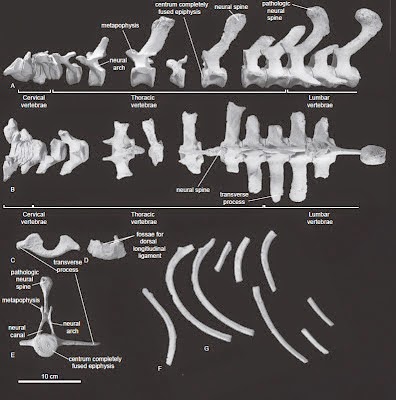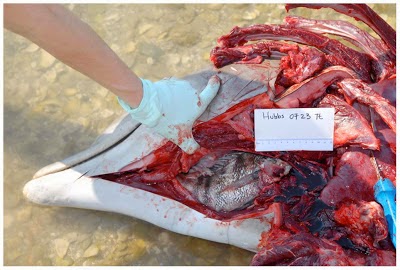Dolphins, Delphinidae, are the most diverse group of Whales (or
indeed any form of Marine Mammals) alive today, with 36 described species
including charismatic animals such as Bottlenose Dolphins and Killer Whales.
Historically a large number of fossils have also been assigned to this group,
but the vast majority of these are no longer considered to be True Dolphins.
Twelve fossil Dolphin species are currently widely accepted, all from the
Pliocene or later and the majority from Italy. The oldest known True Dolphin is
thought to be an undescribed specimen from the Late Miocene of California (LACM
52147), though this specimen lacks a head so its precise classification is hard
to determine.
In 1977 palaeonotologist Hideo Horikawa described a fossil Dolphin from the Late
Miocene Mashike Formation of Hokkaido Island, Japan, however this description was published in Japanese, and
has received little attention outside Japan. Horikawa placed the specimen in
the extant genus Stenella, giving it
the specific name kabatensis. However
the original description apparently contains a number of inaccuracies, and the
genus Stenella has recently been
shown to be polyphyletic (i.e. the five living species placed within the genus
are not one-another’s closest relatives) by a genetic analysis, which is likely
to lead to the reassignment of a number of Dolphin species in the near future.
In a paper published in the Journal of Vertebrate Palaeontology on 6
May 2014, Mizuki Marakami of the Graduate School of Creative Science & Engineering at Waseda University, Chieko Shimada of the Mineral Industry Museum
at Akita University and the Geological Survey of Japan, Yoshinori Hikida of the
Nakagawa Museum of Natural History, Yuhji Soeda of the Historical Museum of Hokkaido and Hiromichi Hirano of the Department of Earth Science at Waseda University redescribe Stenella kabatensisas
Eodelphis kabatensis (Eodelphis meaning ‘Dawn-Dolphin’).
The specimen comprises a partial skull lacking the rostrum (snout)
but having both mandibles and a number of teeth. Marakami et al. feel confident assigning this specimen to the Delphinidae,
making it the oldest known member of the group. The specimen is at least 7.6
million years old, and probably between 8.5 and 13 million years old, though
Marakami et al. suggest dates older
than 9 million years are less likely.
The skull of Eodelphis kabatensis.
Photograph of the skull whitened with ammonium chloride. (Top left) Dorsal
view, (bottom left) left lateral view, (top right) anterior view, (bottom
right) antereoventral view. Marakami et
al. (2014).
A phylogenetic analysis suggested that Eodelphis kabatensisis more closely related to the living Orcinas orca (Killer Whale) than any
other extant Dolphin, rather than being close to the common ancestor of all
Dolphins. This supports previous molecular studies, which suggests that the
group diversified earlier in the Miocene.
See also…
The Squalodelphinidae are a small group of small to medium-sized
Toothed Whales known from the Miocene of Europe and North and South
America. They are thought to be related to the modern Asian River
Dolphin, Platanista gangetica, which
lacks any close living relatives. The group is not well understood, with most
described specimens being fragmentary in nature.
Porpoises (Phocoenidae) are small Whales, related to Dolphins (Delphinidae). They tend to have shorter snouts than Dolphins, with flattened, spade-shaped teeth, as opposed to the conical, pointed teeth of Dolphins. They are among the smallest and shortest lived Whales, ranging from 1.2 to 2.3 m in length and typically reaching sexual maturity at about eight...
Bottlenose Dolphins (Tursiops truncatus) are predatory Ceteceans, which primarily hunt small Fish. They are intelligent, social animals...
Porpoises (Phocoenidae) are small Whales, related to Dolphins (Delphinidae). They tend to have shorter snouts than Dolphins, with flattened, spade-shaped teeth, as opposed to the conical, pointed teeth of Dolphins. They are among the smallest and shortest lived Whales, ranging from 1.2 to 2.3 m in length and typically reaching sexual maturity at about eight...
Bottlenose Dolphins (Tursiops truncatus) are predatory Ceteceans, which primarily hunt small Fish. They are intelligent, social animals...
Follow Sciency Thoughts on Facebook.




